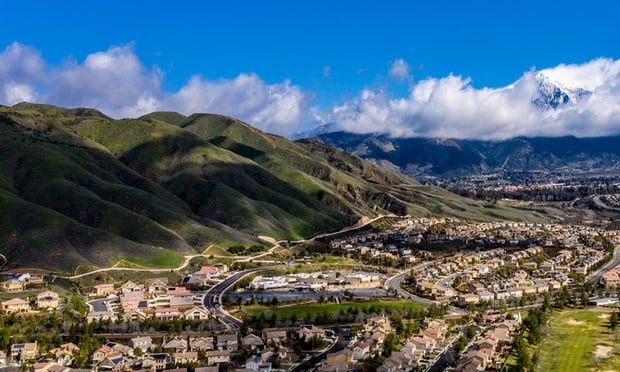The Inland Empire’s industrial market is exhibiting a healthier balance between supply and demand, with strong leasing activity across all size ranges and positive net absorption totaling nearly 3.6M square feet across the IE East and IE West submarkets in the three months of the year.
These strong fundamentals pushed the overall vacancy rate down to 6.6% in Q1 2025, the first decline in the category since the third quarter of 2022, CBRE reported.
The tidal wave of new construction in the two-county Inland Empire, which peaked in 2022 when nearly 40M square feet of industrial space was under development, continued to dwindle in the first quarter.
Recommended For You
Construction deliveries outpaced starts for the fourth consecutive quarter, with 2.7M square feet of completed space entering the market while only 549K square feet broke ground. About 23% of the 9.5M square feet under construction at the end of Q1 was preleased.
New leasing activity in the Inland Empire totaled 11.7M square feet, with 5.5M square feet in the IE East and 6.3M in the IE West. Available sublease space ticked down to 16M square feet, from 16.6M square feet in Q4 2024.
Average taking lease rates fell for the seventh consecutive quarter as the 689M square foot Inland Empire industrial market re-balances from the pandemic warehouse boom. Lease rates dropped to $1.12 NNN per square foot per month in the first quarter, a 17.6% drop in a year-over-year comparison with Q1 2024.
The trend of large users becoming owners was central to the largest industrial deal of the year thus far in the Inland Empire, retail giant Burlington’s $257M purchase this month from BlackRock of an 890,000-square-foot distribution center in Riverside.
Burlington, which has occupied the warehouse at 21600 Cactus Avenue since 2019, now owns three of its 12 distribution centers as part of a strategic shift to own rather than lease its national logistics infrastructure.
A significant portion of the industrial leasing activity in the first quarter in the Inland Empire was driven by Asian-based logistics suppliers who stocked up on goods in anticipation of U.S. tariffs on goods coming from Asia.
A major part of Southern California’s economy is based on importing goods from Southeast Asia. Chinese goods account for 39% of the imports at the Port of L.A. and 62% of the imports at the Port of Long Beach; between the two ports, a total of 186,000 people work in international trade, according to CBS News.
“The single most important part of the economy, in terms of employment (and) economic activity, in the L.A. area is logistics, basically the imports, exports, shipment of goods,” Kevin Klowden, an economist with the Milken Institute in Santa Monica, told the Los Angeles Times.
Logistics employs 265,000 people in the two-county Inland Empire, according to CBS data.
© 2025 ALM Global, LLC, All Rights Reserved. Request academic re-use from www.copyright.com. All other uses, submit a request to [email protected]. For more information visit Asset & Logo Licensing.







